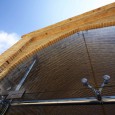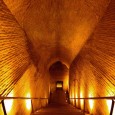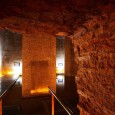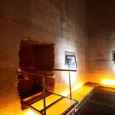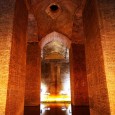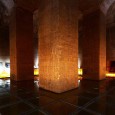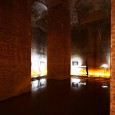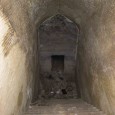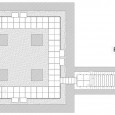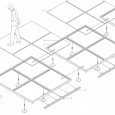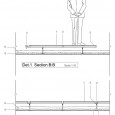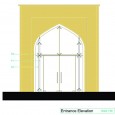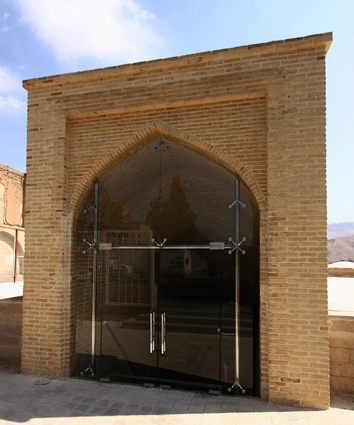Description
The Āb-Anbār (literary: Underground Reservoir) of Dīvān-Khāneh (literary: Courthouse) is one of the benevolent water reservoirs developed as commanded by Karim Khan Zand between 1163-1193 AH in Shiraz. Modeled after Safavid architecture, the reservoir composed of a 3m-wide masonry staircase and a pool with an area of 15mx15m and a depth of 10m. It is located to the northeast of Tūpkhāneh square and adjacent to the Dīvān-Khāneh of Shiraz.
There used to be a Naghāreh-Khāneh (literary: Drum Tower) on top of the reservoir in the past, whence important messages were conveyed to the people. The Bād-Gīr (literary: Wind Catcher) behind the drum tower which served as a ventilator for the reservoir is also completely destroyed. Another building must have existed between the reservoir and the Dīvān-Khāneh which is also completely destroyed but for one of its arches which remains stuck to the exterior wall of the Dīvān-Khāneh. The reservoirs attributed to Karīm-Khān were registered no. 935 in the list of Iranian National Heritage on 14.8.1355 (Iranian calendar).
The Revitalization of the Āb-Anbār of Dīvān-Khāneh
Water scarcity has always tormented people of Iran, compelling them to establish very delicate and ingenious structures – bridges, dams, aqueducts, underground reservoirs, bath houses, canals, watermills, etc - to store water and control its usage. The Āb-Anbār of Dīvān-Khāneh was renovated in 1388 (Iranian calendar) and transformed into Fārs Province Museum of Aqua Structures to serve as an information center dedicated to aqua structures which lie in ruins due to ignorance. The 24 posters and 8 models in the museum provide information about aqua structures in Fars province.
Design and Revitalization Ideas
The main revitalization concept was the presence of water, which seemed to be mandatory as the key concern of the project. The presence of water along the gallery would definitely signify its importance for Iranians throughout history.
As inspired by The Temple of Ānāhītā (Persian goddess of water, fertility and healing) in Bīshābūr, a transparent floor covering was devised and fixed 10cm above the water surface. Reflections in the water are meant to be associated with the divinity of water for ancient Iranians.
Materials Manipulated
All additional structures are made of security laminated glass and stainless steel. Glass was used in flooring to minimize the visual distortion of the original atmosphere and provide visitors with a floating sensation over water and light.
Construction System
All frames and joints are made of stainless steel to reinforce slabs of glass, resist rust and also enhance the transparency of the interior surfaces with their neutral color and reflective properties. After being transported to the site, the prefabricated structure parts were bolted to adjustable frames and fixed 10cm above the water surface. Due to the subsidence of the staircase which has lead to difference of stair risers, the staircase was provided with a steel handrail to enhance climbing/descending the steps with higher risers. The surface of glass slabs covering the treads was sand-blasted to prevent slipping.
Lighting
12V and 24V low-consumption LED lamps with an efficiency of 125 lumens per Watt were manipulated to minimize the risk of electrocution resulted from the placement of lamps in water. The lamps along the gallery are hidden from direct view to provide the interior with a moderate lighting and create pleasant shades.
Amber high-glare LED lamps (2100 Kelvin) were manipulated to give an impression of vigor and liveliness as contrasted with the cold colors of the mortar-coated walls and still water.
Farsi
Please click on the Link below to read the information in Farsi Language.
Click Here!

